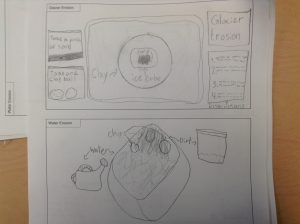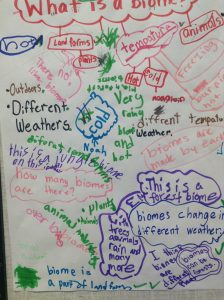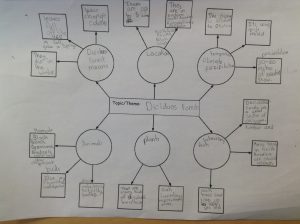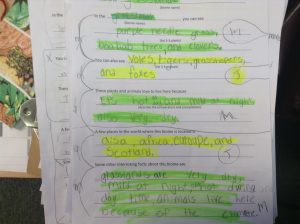Inquiry Synthesis
Where I Came From:
When I first chose my inquiry topic, I chose it with the intention of researching and discovering more about the benefits and downfalls of Fresh Grade. I quickly discovered that there is much more technology to be involved in formative assessment in the classroom. My main focus continued to be Fresh Grade; however, it was only one piece of the puzzle.
I anticipated that technology is becoming an important part of 21st century learning; however, I discovered through personal experiences, scholarly research, and discussions with colleagues just how impactful technology can be. My inquiry journey took me far beyond my initial expectations. I will address each of my initial expectations, how they were confirmed or denied, and how my expectations were taken further.
Where I Am Now:
Expectation Number One: It is not a matter of if we will use technology for assessment but when and how.
Formative assessment has proven to help increase student learning and as a result technology has begun to catch up in the classroom. There are many different tools for formative assessment that are now becoming available for school districts and they need to be taken advantage of. In their article Technology and formative assessment Brown, Hinze, and Pellegrino state: “With technology, assessment can become richer, more timely, and more seamlessly interwoven with multiple aspects of curriculum and instruction (2008, p. 253).”
Edutopia blogger Monica Burns suggests four categories of apps or websites that can help teachers with formative assessment: Quiz Apps, Show What You Know, Mind Mapping, Miscellaneous Apps (2014, December 14). These apps can then be translated into use on Fresh Grade. Students can easily share the pieces of work they have created on these different platforms on Fresh Grade.
Expectation Number Two: Technology for assessment does not automatically mean students are engaged in the process.
Technology can help students be more engaged in their learning when it is used in a way that considers students interests and needs. Students often love using technology and have a lot of knowledge about it. Teachers need to consider the audience or age group, the goal of the assessment, and the type of formative assessment when selecting engaging technology. Ms. Lileana Rios has found that the use of Edutopia in her classroom increased student engagement and students who would not normally be engage in their learning are sharing ideas, videos, and thoughts related to the topics (2013, February 9). Student’s learning is more visible than ever before through the use of technology and digital portfolios. Now students can share their excitement about learning on a platform that can travel with them from grade to grade.
Expectation Number Three: Technology for assessment must be well thought out in order to be meaningful.
Research has proven that technology can have a strong role in formative assessment so long as teachers are willing to search for the right technology and the right use. While technology can enhance formative assessment it cannot replace a good teacher who has strong pedagogical practices in place. It would seem that teachers are the key to technology enhancing formative assessment.
Expectation Number Four: Technology is particularly important in formative assessment because it provides more open and immediate feedback.
Using technology for formative assessment can provide open and immediate feedback in two ways. First, teachers can use quiz apps or exit slips posted to a website such as Padlet to instantly know if students have grasped a concept. With this real-time feedback the lesson can quickly be adjusted based on the information. Second, teachers, students, and parents all have access to student learning throughout the year on a tool like Fresh Grade. Every stakeholder can see a student’s achievements and areas where they are struggling. Students can set goals based on formative assessment before the summative assessment piece comes.
Expectation Number Five: Technology helps students reflect on their journey as a learner throughout the year.
Students often display a sense of pride and ownership when they use Fresh Grade. Fresh Grade provides a platform for children to develop their self-assessment skills. Through a careful, ongoing process the digital portfolios can help give evidence of student learning, show their learning journey, and invite students to reflect on their learning. The Early Childhood Research and Practice has found that instant video revisiting, which allows students to immediately view videos of themselves working and reflect alongside their teacher, has helped support student learning (Beyne, 2015).
Through writing, drawing, and video students can reflect quickly in real time providing an authentic look at their thoughts. Kelli Vogstad discusses the joy of watching her students using Fresh Grade stating, “It is exciting to watch and listen as students talk and write about what they did, and how they learned; what they struggled with, what was successful for them and how they know this is true. Through this language of reflection and analysis, students learn to monitor, assess, make decisions, and goals to move their learning forward (2015).”
Expectation Number Six: Summative assessment is a key piece in using technology for formative assessment.
While my inquiry project focused on formative assessment it has become clear to me that formative assessment is closely linked to summative assessment. Technology can help strengthen the process of student learning which has the potential to help them demonstrate their learning more clearly through summative assessment. This aspect of assessment is one that I will look forward to inquiring into in the future.
Where I Am Headed:
Armed with the knowledge of how technology can enhance formative assessment I look forward to using this knowledge in my practicum. The use of Fresh Grade will be a big part of assessment in my classroom. Students will continue to post evidence of their work on Fresh Grade. I plan to use online concept maps and perhaps Padlet walls for conducting formative assessment. I know that self-reflection is an important part of formative assessment and student learning. Therefore, students will be given many opportunities to engage in peer and self-assessment, most likely through Fresh Grade.
I plan to bring the use of iPad’s and technology into the classroom on a weekly basis. Students will be given opportunities to create projects using technology such as a biome video project and a math fraction book using Book Creator. Students will also be setting up their own blogs where they will post some of their learning and write reflections. I will also be using video recording in P.E. Students will record one another performing a task, watch the video and assess for criteria. They can then decide if they have met the criteria. If not, they can refilm. Once they are satisfied they have met the criteria they will write a self-reflection based on the video.
Most importantly, I will be constantly self-evaluating and checking with my students to make sure the technology is still meaningful in formative assessment. The goal of formative assessment should always be to help students learn and the use of technology is one powerful way this can be accomplished.
References
Burns, M. (2015, December 14). Empowering Teachers with Tech-Friendly Formative Assessment Tools. Retrieved from: http://www.edutopia.org/blog/tech-friendly- formative-assessment-tools- monica-burns
Ledezma, Daniel. (2013, February 9). Technology in the classroom-Infuse Learning and Edmodo. Retrieved from: https://www.youtube.com/watch?v=Lz0hNJjFy-M
Vogstad, K. (2015, August 31). Digital Portfolios…Making the Learning Visible. Retrieved from http://kellivogstad.com/2015/08/31/digital-portfolios-making-the-learning-visible/




